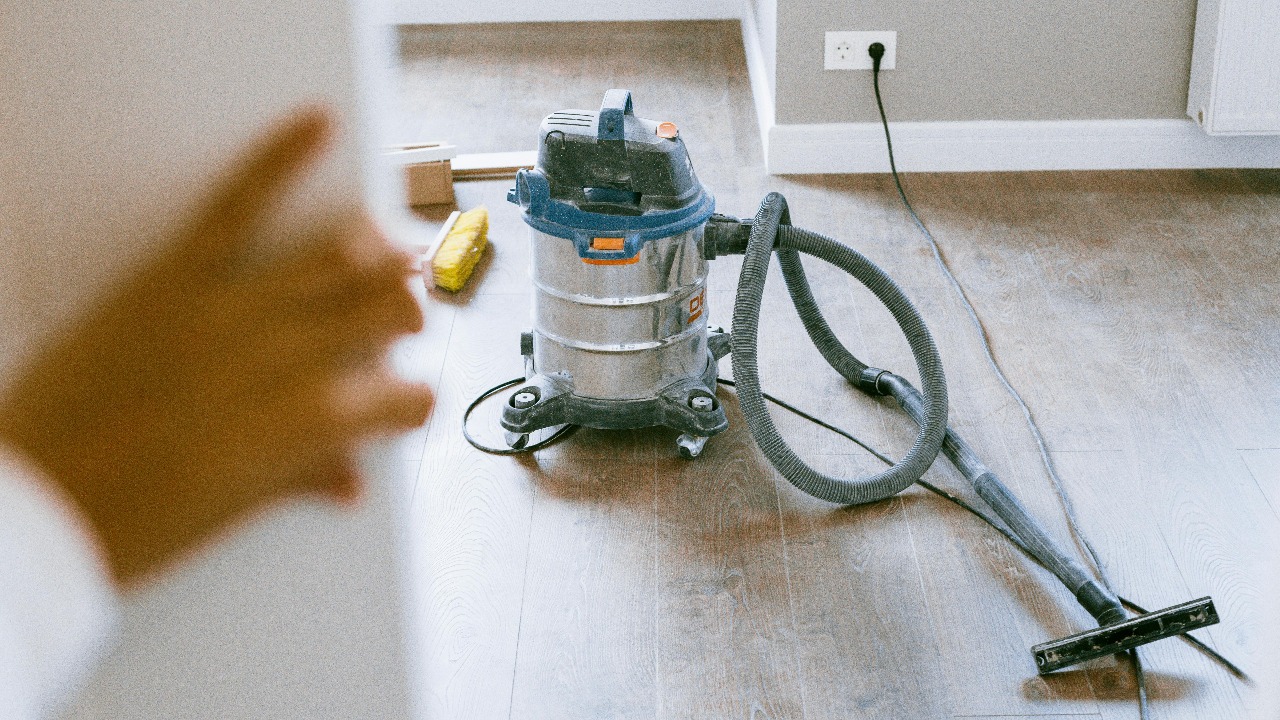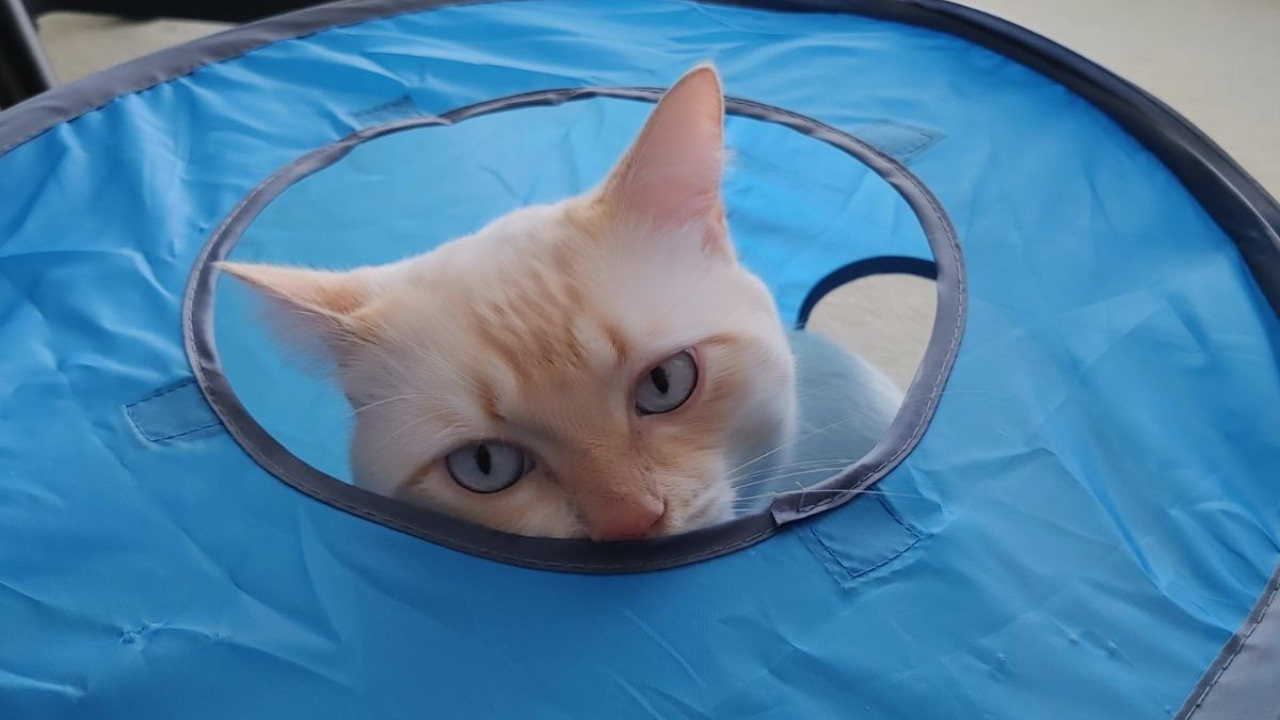Let’s face it. Cats may fancy themselves as ferocious killing machines, but when it comes to actual valor, they’re sorely lacking. From vacuum cleaners to buckets, spray bottles, and even towels, our homes are filled to the brim with scary monsters that encompass the most common cat fears, giving them nightmares and scaring them witless.
Having had my share of scared cats throughout my life, I’ve grown into somewhat of a self-appointed expert in allaying the most common fears of my furry friends and keeping them happy.
What Is a Cat’s Worst Fear?

Well, it depends on the cat. Sometimes, poor socialization and pet-caring mistakes may instill fears in cats who would otherwise be well-adjusted and secure.
Take Beau, a cat who had gone through a string of owners before landing his “furever” home with my husband. He had a visceral fear of spray bottles and buckets.
Although these common household things are objectively harmless, he begged to differ, and for good reason. As it turns out, one of Beau’s previous owners sprayed or splashed water at him whenever he tried to scratch furniture.
Understandably, the cat developed a fear — and hatred — of these objects. Could Beau’s owner have handled his furniture scratching better? Indubitably.
Providing lots of scratching posts around the home, rewarding good behavior instead of punishing bad behavior, and using pheromone sprays to keep your cat interested in scratching posts are alternatives. They are great ways to change bad behavior without traumatizing the animal.
How Do I Make My Cat Not Scared of Things?

All cats deal poorly with loud noises, strangers, and certain strong smells, like chemical fragrances or citrus scents. However, how you socialize them makes the difference between a well-adjusted cat with some pet peeves or a scared cat who cowers whenever the neighbors drop something.
For example, my current kitty family consists of a five-year-old mama and her former kitten, now a three-year-old boy who fancies himself quite the warrior. He has a penchant for laser pointers and various coil toys.
While neither cat appreciates the vacuum cleaner, blender, or robot vacuum, they’re not terrified either. At worst, they’ll leave the room when you’re using the vacuum. It’s a far cry from my previous cat, who used to hide in the bathtub (which he hated) when I would turn the vacuum on.
In their case, what worked was downplaying cleaning day and not making a big deal of it. We naturally introduced the “monsters,” as they’re commonly known in our home, and initially did quick cleaning sessions. This approach showed the then-kitten and his mama that they were inoffensive.
We also took advantage of their curiosity. The robot vacuum awakened their hunting instinct, so we placed toys on it as it was making its rounds around the room to make them chase it. Mama’s curiosity peaked and waned early — she no longer cares to chase it around.
Nevertheless, her boy still loves to chase the appliance around the floor — which has made for hilarious pictures and memories for us and, more importantly, lots of fun for him.
How Do You Build Confidence in a Scared Cat?

Rebuilding confidence in a scared cat isn’t easy, and it requires lots of involvement and patience.
Back in 2012, six months after our beloved Beau died at the age of 17, we went to a local shelter to adopt a cat with a heartbreaking backstory. Sammi was a five-year-old cat abandoned in sweltering heat in a taped box by the side of the road.
Luckily, he had been found by chance by a good Samaritan a few hours later. Unfortunately, his luck didn’t change that day.
Despite being a gorgeous odd-eyed Van cat, his shy and fearful nature meant he spent the following 16 months at the shelter. By the time we came along, the volunteers had lost all hope of anyone adopting him.
Having had cats since I was a child, I thought I knew what I was getting myself into with Sammi and figured I would overcome his fears in a matter of months. Boy, was I wrong! Sammi’s pathological shyness, distrust, and fear were so deeply ingrained that it took years for him to finally come around and enjoy our company.
What did we do to build confidence in him? We gave him lots of spots to hide and feel safe and spent time with him on his own terms — usually armed with his favorite chicken treats. We only showed him love, respect, and acceptance.
Constant reassurance, eye contact, and gentle pets also helped seal the deal. While his fear of boxes and loud noises remained, by the time Sammi turned into a very active senior, he had become a better-adjusted cat who had let himself trust humans again. All our efforts were worth it — and so was he.
Caring for Fearful Cats

If you’ve adopted a fearful kitty or your friend has gone through a traumatic experience that left it scared and shy, you can do a few things to gently improve its situation.
First, be patient and understand that your pet will need an adjustment period, which may vary in duration. Some scared cats only need a few weeks to overcome their fear or shyness, while others may need months or years.
Not forcing your presence on your cat is equally important. Hiding is normal for fearful cats and helps them control their environment and calm themselves. Let the cat come to you rather than forcibly trying to grab it from under the bed or another spot it hides in.
Scared cats that feel cornered will lash out — the perfect recipe for hisses, bites, scratches, and a bruised ego on your end and even more terror on theirs.
Once your fearful cat starts showing some interest in your presence, use treats and food to your advantage. If the animal starts associating you with good things, its interest and trust in you will grow.
As your cat grows to expect good things when you’re around, try playing with it. Use a wand toy that lets your friend stay semi-hidden while it plays and doesn’t make it feel you’re too close or encroaching on its hiding spot.
Finally, if your fearful cat needs to see the vet often, try to make it as comfortable as possible in the carrier and help it dissociate vet trips from fear and discomfort. Give your cat some good noms in the carrier and leave it in its room so it gets used to it and scents it at leisure.
It bears repeating that patience is your best friend when dealing with a fearful cat. Don’t ever give up — fear will turn into love and endless purrs in due time.






